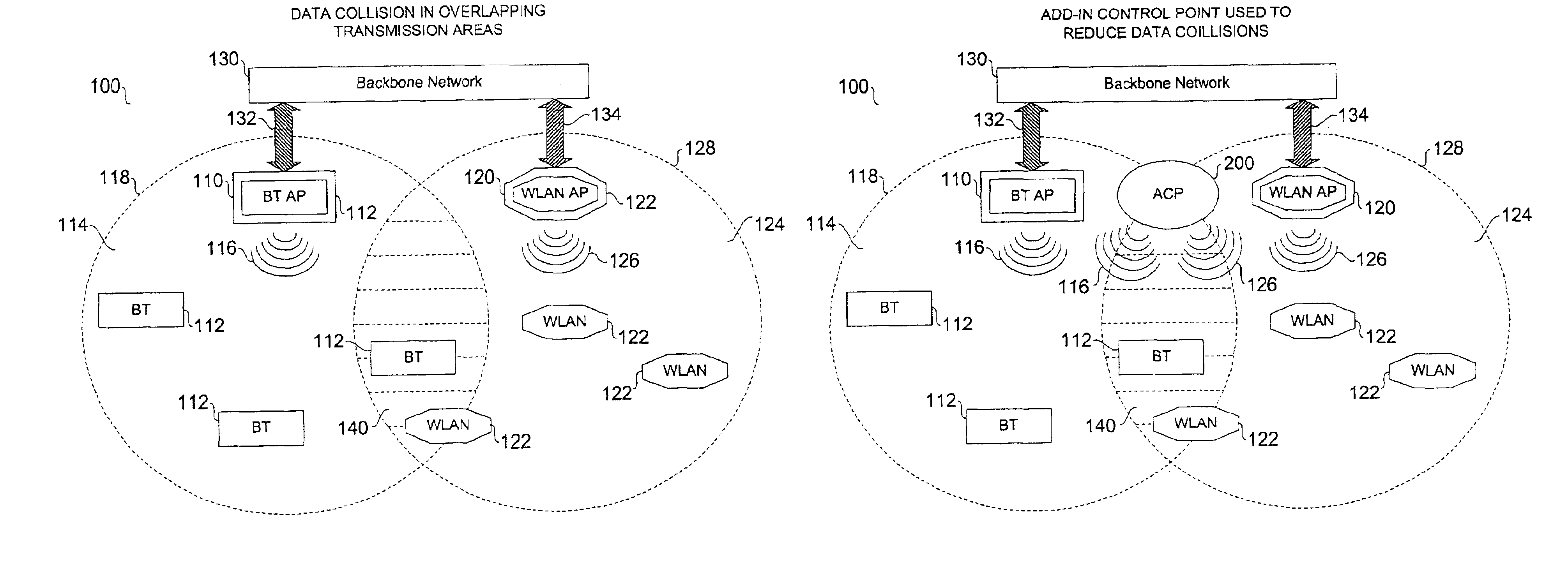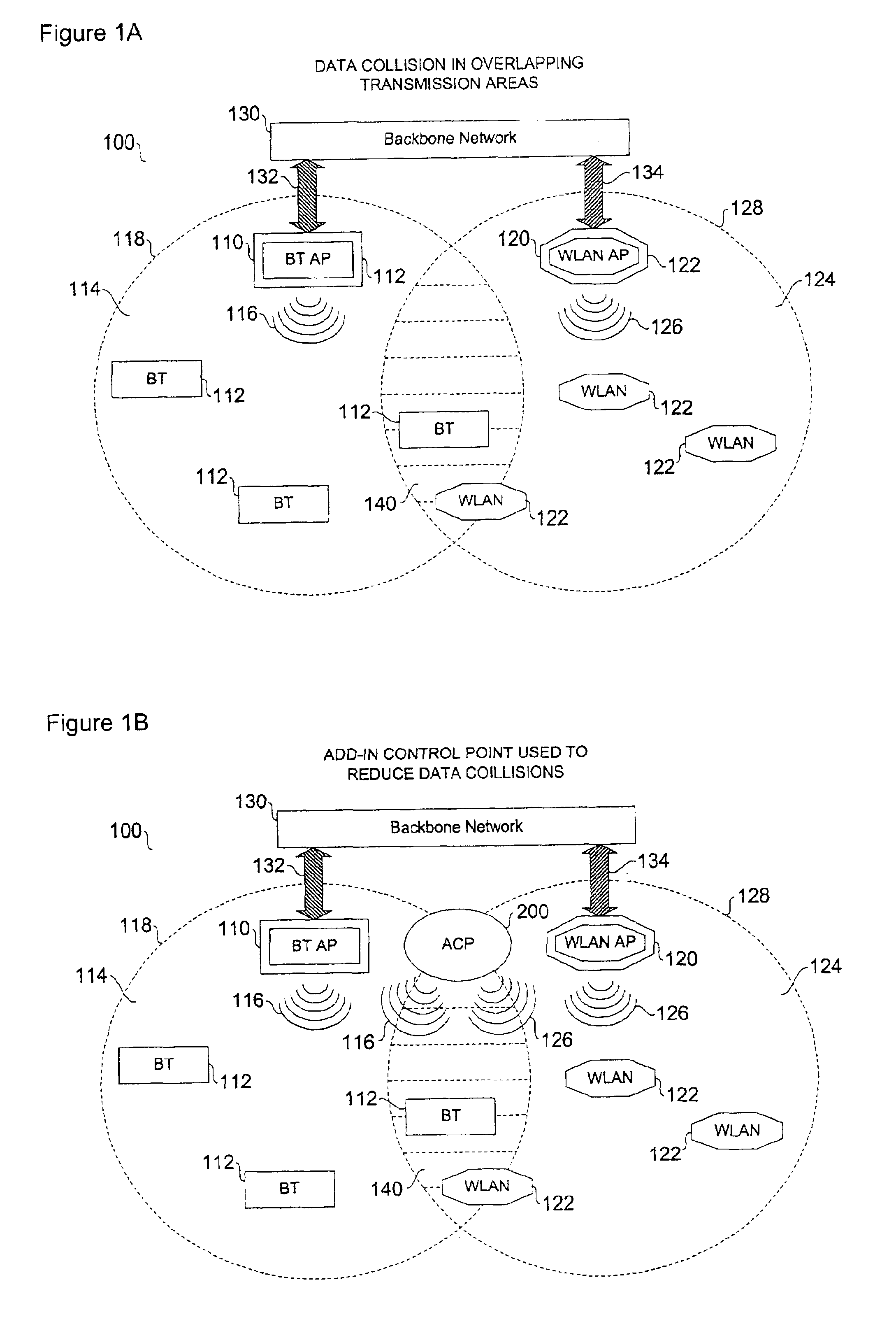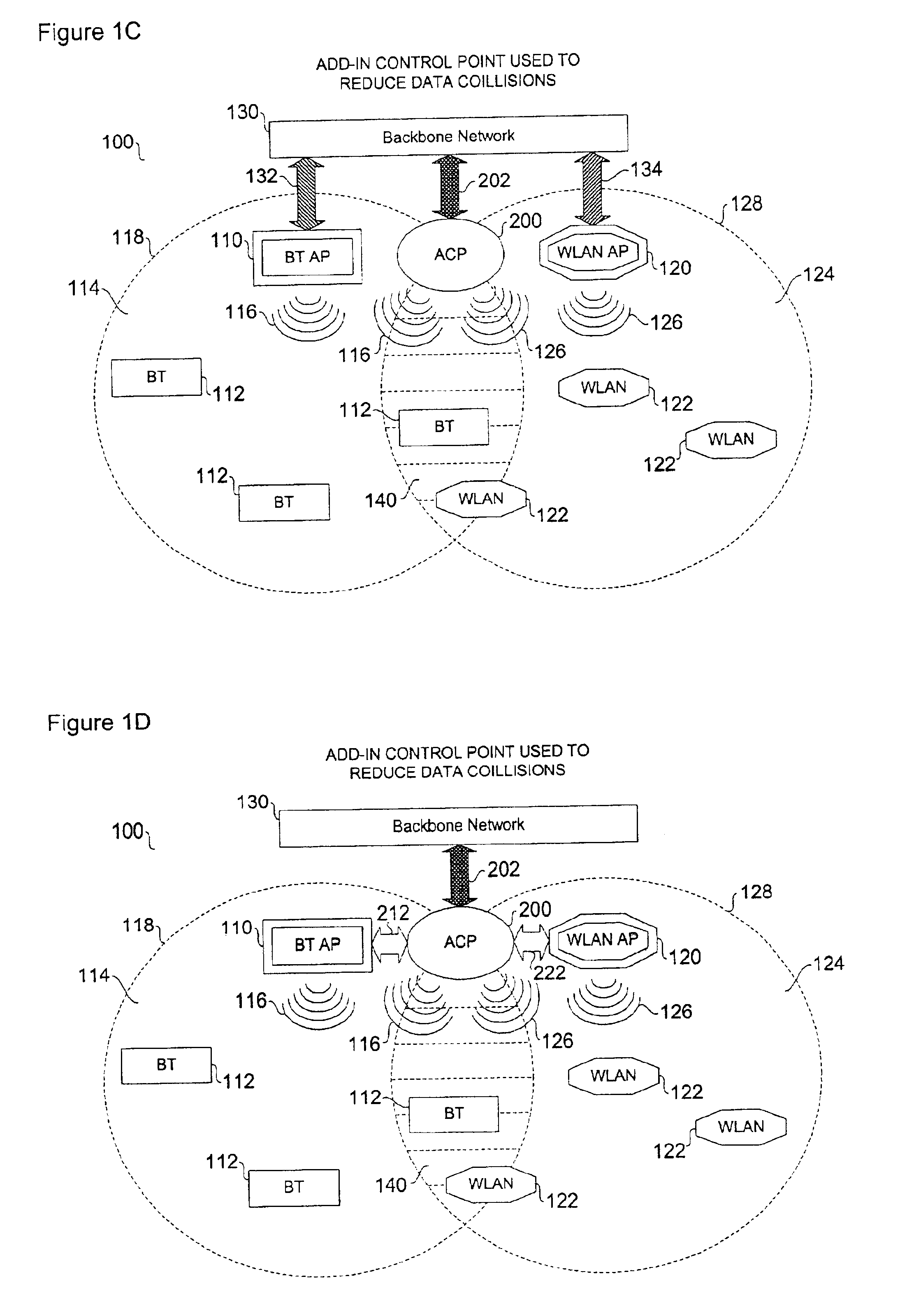Top-level controller for wireless communication devices and protocols
a wireless communication device and top-level controller technology, applied in the field of wireless networking systems, can solve problems such as data corruption, transmission interference and data corruption, and degrade the network performance and transmission rate of both devices families, and achieve the effect of reducing collisions
- Summary
- Abstract
- Description
- Claims
- Application Information
AI Technical Summary
Benefits of technology
Problems solved by technology
Method used
Image
Examples
Embodiment Construction
[0037]Although the following description exemplifies various embodiments of the present invention, it should be understood that omissions, substitutions, and changes in the form of the detail of the apparatus, system, and method as illustrated, as well as the uses thereof, may be made by those skilled in the art, without departing from the spirit of the present invention. Consequently, the scope of the present invention should not be limited to the disclosed embodiments, but should be defined by the appended claims.
[0038]FIG. 1A illustrates a wireless network 100 having wireless communication signals 116, 126 which conflict in an overlapping transmission region 140. Within the wireless network 100, a plurality of wireless communication devices or data transfer terminals 110, 112, 120, 122 operate within one or more access areas 114, 124. Each access area 114, 124 is further characterized by a wireless communication signal reception radius 118, 128, respectively. The wireless transmi...
PUM
 Login to View More
Login to View More Abstract
Description
Claims
Application Information
 Login to View More
Login to View More - R&D
- Intellectual Property
- Life Sciences
- Materials
- Tech Scout
- Unparalleled Data Quality
- Higher Quality Content
- 60% Fewer Hallucinations
Browse by: Latest US Patents, China's latest patents, Technical Efficacy Thesaurus, Application Domain, Technology Topic, Popular Technical Reports.
© 2025 PatSnap. All rights reserved.Legal|Privacy policy|Modern Slavery Act Transparency Statement|Sitemap|About US| Contact US: help@patsnap.com



